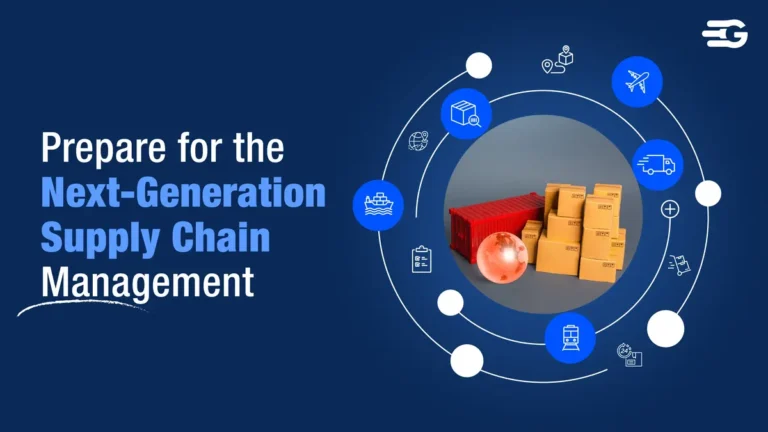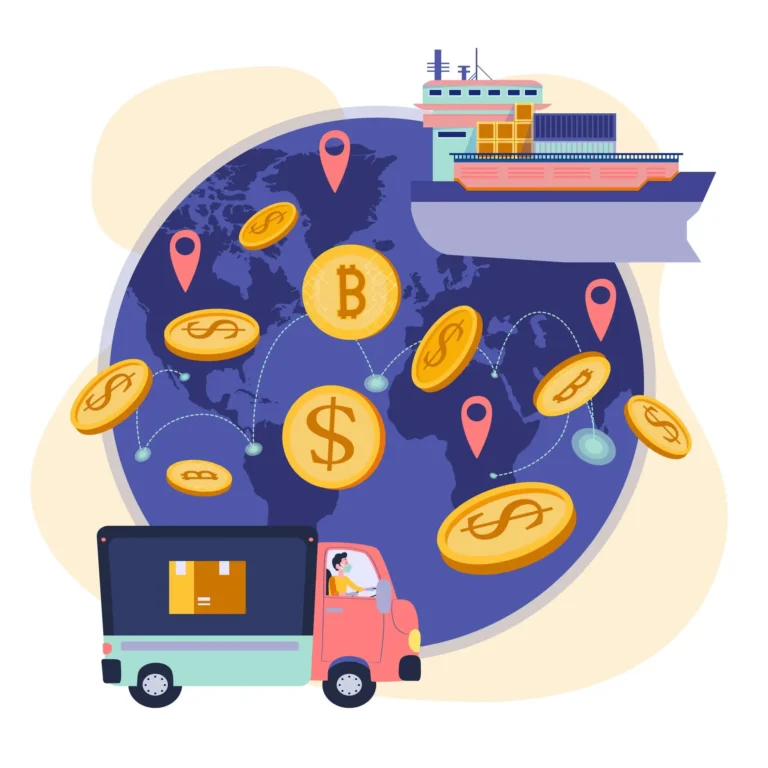Mastering Supply Chain Collaboration for Business Success
The world’s most resilient and successful supply chains are built on strong relationships and a deep understanding of collaboration. By mastering supply chain collaboration, these companies are not only driving cost savings and process efficiencies but also building agility to navigate disruptions and market fluctuations.
But what does supply chain collaboration mean, and how does it fit into present-day supply chain management? In an ideal world, everyone involved in a product’s journey, from sourcing raw materials to final delivery, would work together seamlessly. This collaboration is essential to ensure not only cost-effectiveness and reliability, but also responsiveness to ever-changing customer demands, market trends, and geopolitical complexities. Unfortunately, fragmented information sharing and siloed operations remain significant hurdles that need to be overcome.
Key Components of Successful Supply Chain Collaboration
Today’s decentralized supply chains, composed of dynamic networks and specialized businesses, highlight the necessity of supplier collaboration. Despite industry reports, like one from McKinsey, that tie supplier collaboration to lower costs, faster growth, and higher profitability, many supply chains still rely on traditional buyer-seller relationships, limiting their potential. Embracing a collaborative culture requires focusing on multiple essential elements:
Technology Integration: Collaboration is hampered by information silos. It is crucial to put in place reliable technology platforms that allow for real-time data sharing throughout the supply chain. This makes it possible for everyone involved to see exactly what inventory levels, manufacturing schedules, and possible disruptions are.
Shared Goals: When everyone is aiming for the same end result, collaboration is at its best. Establish measurable, unambiguous goals that will benefit all parties involved, not just a single company. This encourages everyone to participate in the success of the entire supply chain and creates a sense of shared responsibility.
Transparency: Open communication is paramount. Improved planning and proactive problem-solving are made possible by the sharing of precise data and forecasts. In order to foster confidence and promote cooperation, businesses must be prepared to be open and honest about their own difficulties and constraints.
Trust: Developing trust is essential for every relationship to succeed. This calls for consistent performance, a dedication to just dealing, and a readiness to share risks and benefits.
Real-World Examples of Effective Supply Chain Collaboration
The global fight against COVID-19 underscored the critical importance of collaboration in complex pharmaceutical supply chains. A prime example is the partnership between Pfizer, a leader in vaccine development, and McKesson, a major player in the healthcare distribution industry.
This partnership transcended typical business transactions. Pfizer ensured the timely delivery of its COVID-19 vaccine to hospitals, pharmacies, and immunization sites by leveraging McKesson’s extensive and well-established distribution network. McKesson’s expertise in cold-chain management and logistics was crucial for maintaining the precise temperature conditions required for the vaccine’s effectiveness, guaranteeing secure and efficient delivery.
The collaboration between Pfizer and McKesson extended beyond physical distribution to include forecasting and data exchange. By working together, the two companies could predict demand and anticipate shortages, leading to a proactive approach that minimized disruptions, ensured timely access to the life-saving vaccine, and enabled effective inventory management. This successful partnership during the COVID-19 pandemic is an excellent example of how collaborations can safeguard public health and accelerate the delivery process for essential goods.
Strategies for Enhancing Supply Chain Collaboration
The foundation for successful supply chain collaboration remains the same: shared objectives, transparency, and trust. However, there is more than surface level knowledge to build a successful supply chain collaboration. And the digital age offers more modern strategies to amplify these core principles and create a more dynamic and efficient collaborative environment.
5 Steps to Build Supply Chain Collaboration
- Identify stakeholders with whom there’s scope for collaborative opportunities.
- Determine the end goal and develop a case that rewards both parties.
- Develop a methodology to track progress and measure the success of the collaboration. The more structured the approach, the better the tracking of the results.
- Invest in the infrastructure and resources required to support the project, especially a management framework.
- Encourage a culture of knowledge sharing, effective communication, and transparency.
Supplier collaboration has gone beyond mere “nice-to-have” ages ago. The importance of collaboration in the supply chain is undeniable. Simultaneously, it is neither quick nor straightforward. The question that remains is whether it’s worthwhile. And the answer will always be a firm “YES.”
Modern Strategies for Supply Chain Collaboration
Digital Transformation: Use strong technological platforms to dismantle information silos. Across the whole supply chain, real-time data sharing is made possible by cloud-based technologies. This enables proactive planning and problem-solving by giving all parties a comprehensive picture of inventory levels, production schedules, and potential disruptions.
Platforms for Collaborative Data Sharing: Go beyond spreadsheets and email chains. Platforms for securely sharing data offer a central location for exchanging forecasts, updates, and vital information. As a result, communication is streamlined and openness is promoted, enabling all parties involved to arrive at informed decisions using the latest data.
Collaborative Problem-Solving Techniques: Collaboration is about more than just exchanging information; it’s about coming up with solutions to problems together. Regular communication and brainstorming sessions can be facilitated by utilizing video conferencing and other collaboration solutions. All partners can contribute their special knowledge to recognise issues early on and find solutions by creating an environment that encourages open communication.
Risk management through collaboration: There are many possible disruptions due to the constantly shifting global environment. Working together to create risk management plans, suppliers and businesses can create backup plans to help with unforeseen problems. By communicating early alerts of impending shortages or delays, everyone can minimize disruptions and respond proactively.
Invest in Collaborative Technologies: Don’t limit yourself to basic platforms for sharing data. Investigate cutting-edge technologies like blockchain, which can create a transparent and safe record of transactions all the way through the supply chain. Also, invest in machine learning (ML) and artificial intelligence (AI) techniques in order to analyze large datasets and anticipate possible bottlenecks or disruptions. By utilizing this information, forecasting accuracy can be increased, inventory management can be optimized, and the supply chain ecosystem as a whole could be strengthened.
Challenges and Solutions in Supply Chain Collaboration
Although there is no denying the advantages of supply chain collaboration, there are challenges along the way. New problems have surfaced in the complicated and linked world of today, demanding creative answers.
Threats to cybersecurity: As the use of digital platforms increases, so does the susceptibility to cyberattacks. Operations can be disrupted, private information might be revealed, and partner trust can be damaged by data breaches. Strong cybersecurity measures must be put in place. This entails making investments in secure data encryption, conducting frequent vulnerability assessments, and providing staff with cyber hygiene training. Furthermore, encouraging a transparent culture inside the cooperative network makes it possible to identify and neutralize possible threats more quickly.
Worldwide Supply Chain Disruptions: Pandemics, natural disasters, and geopolitical unrest can all seriously impair global supply chains. Production delays, price volatility, and stockouts might result from these interruptions. The secret is collaborative risk management. Suppliers and businesses can collaborate to create backup plans in case of disruptions. This entails developing buffer inventory levels, changing up sourcing tactics, and putting in place explicit communication guidelines for prompt alerts and action.
Sustaining Visibility Across the Supply Chain: Contemporary supply chains can be exceedingly intricate, comprising multiple participants and products that travel across great distances. Limited visibility may result in inefficiency and missed collaboration opportunities. Greater insight into inventory levels, shipping locations, and potential delays can be obtained by investing in technologies such as real-time tracking and tracing systems. Here, blockchain technology can also be useful in establishing a transparent and safe record of transactions across the supply chain.
Juggling Collaboration and Competition: While there are many advantages to collaboration, businesses also need to be aware of the need to safeguard their competitive edge. With each partner, clearly establish the parameters of the collaboration. This should specify the regions in which sensitive intellectual property is protected and shared information and procedures are shared. To ensure a collaborative atmosphere that is both mutually beneficial and sustainable, it is important to cultivate a win-win mentality and establish trust.
Fostering a Culture of Collaboration
Success in the complex network of international supply chains of today depends not only on individual efficiency but also on cultivating an environment of collaboration both inside and outside the company. Similar to how a diversified plant community works together to support a thriving garden, a cooperative supply chain ecosystem promotes the growth of all participants.
Internal Collaboration
- Shared Goals and Vision: A solid base begins with a well-defined vision. Bringing internal teams together around a single goal gives them a sense of direction and encourages departmental cooperation. Everyone in the supply chain—from procurement to logistics to customer service—works towards the common objective of a smooth and effective chain.
- Dismantling Silos: Cooperation is hampered by information silos. Encourage departmental contact and dismantle departmental boundaries. Regular meetings, knowledge-sharing sessions, and enterprise-wide communication platforms all foster transparency and understanding, ensuring everyone is on the same page.
- Rewarding Collaboration: Collaboration is encouraged when efforts are acknowledged and rewarded for successful cooperation and collaboration. Measures of departmental success as opposed to individual ones encourage teams to collaborate in order to achieve the common objectives.
Continuing the Collaboration Outside:
- Supplier Relationships: Adopt a genuine partnership approach in place of the conventional buyer-seller dynamics. Fostering trust and enabling all parties to foresee and overcome issues together are made possible by open communication, shared forecasts, and collaborative problem-solving sessions.
- Openness and Trust: The foundation of any fruitful partnership is the development of trust. Communicate clearly, exchange information freely, and show a willingness to collaborate to find solutions to problems.
- Collaborative Innovation: Welcome to collaborative ideation sessions and workshops. Combining the knowledge of many organizations can help you find innovative answers to challenging supply chain problems.
Future Trends in Supply Chain Collaboration
Emerging technologies are unlocking a range of exciting opportunities for supply chain collaboration, with machine learning (ML) and artificial intelligence (AI) at the forefront of this transformation. These technologies can analyze large volumes of data from every point in the supply chain network, providing real-time insights into production bottlenecks, inventory levels, and any disruptions. Consequently, businesses can collaborate more effectively, anticipate problems before they arise, and proactively adjust their logistical or production plans.
For instance, AI can predict shifts in demand, enabling manufacturers to work closely with suppliers to ensure they have the necessary supplies. Similarly, logistics partners can use ML to analyze historical data on transportation delays, recommending alternative routes to optimize delivery schedules. AI-driven collaboration platforms can significantly enhance communication among various stakeholders in the supply chain, promoting transparency and information sharing.
By breaking down organizational silos and enabling real-time data exchange, AI and ML can transform supply chain collaboration into a powerful engine for efficiency, resilience, and customer satisfaction.
Conclusion: Building a Collaborative Future
A successful supply chain collaboration relies on a solid foundation of shared goals, open communication, and trust. However, today’s complex world demands more than these fundamentals. Cutting-edge technologies and innovative approaches are transforming how companies operate within the supply chain ecosystem. Businesses embracing digital transformation can leverage collaborative and cloud-based platforms to enhance communication and real-time data sharing. AI and machine learning further enable proactive planning by analyzing vast amounts of data and predicting potential disruptions.
Investing in technologies such as blockchain for secure record-keeping and implementing collaborative risk management strategies can help mitigate challenges posed by cybersecurity threats and global disruptions. Ultimately, the key to thriving in today’s intricate global supply chains is fostering a culture of collaboration, both internally and externally. By breaking down departmental silos and establishing strong relationships with suppliers, companies can create a mutually beneficial environment that encourages innovation and promotes growth.
Staying current with these trends and integrating them into collaborative practices will be crucial differentiators for companies seeking to build resilient and profitable supply chains as technology continues to evolve rapidly.






